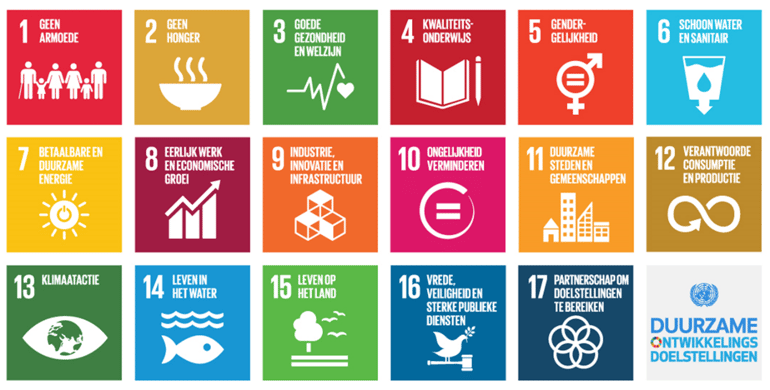
For many, the Sustainable Development Goals (SDGs) have become the new framework on the subject of sustainability. Connecting this to current action on social responsibility may sound easy, but it is far from straightforward if it is to be in any way meaningful. How can businesses and organizations make a meaningful contribution?.
An ambitious framework
The Sustainable Development Goals (SDGs) are the latest, and perhaps even the most important, agreement of the United Nations. At the core of this agreement are a set of 17 Sustainable Development Goals (SDGs) that need to be addressed by 2030. The 2030 Agenda isn’t just ambitious, it is also pushing boundaries. As well as aiming to build on the positive trend of multiple domains, the function of SDGs is to improve on them.
"The current generation is not only being labeled the first generation that can end poverty, but also the last generation that can halt climate change.”"
Extreme poverty, defined as having an income lower than 1.25 dollars per day, has plummeted by over 50% over the last 25 years (1990-2015). The challenges surrounding poverty are clearly of great importance. The current generation is being labeled as the first that can end poverty, but also the last that can halt climate change.
Society's big challenges
SDGs are made up of 17 targets that form an international agreement on what are now considered society’s big challenges. They are based around 5 themes relating to people, planet and prosperity. This includes things like quality education, clean water, fair employment and economic growth. Within this framework, peace and justice (goal 16) are a necessary requirement and partnerships an important means (goal 17).
How to make your contribution meaningful
Each of the 17 goals is made up of specific aims and means, 169 in total. A huge chunk of these targets are centered on Human Rights. These aren’t protected by law in developing countries, which makes the challenges of SDGs there even bigger.
"The first challenge is to make the contribution to SDGs more than merely philanthropic."
Step one: start with responsibility
The first challenge is to make the contribution to SDGs more than merely philanthropic. Or, as John G Ruggie, former UN Secretary-General’s Special Representative on Business and Human Rights argues: “Companies’ social development initiatives cannot be a substitute for measures to address the negative human rights impacts that their operations and relationships may have.” As such, a traditional, socially responsible approach is a vital first step.
Step two: select the right SDG goals
Based on their investment and innovation capabilities, companies play an important role in realizing SDGs. The most effective way they can do this is by contributing to a specific goal, as opposed to just the global goal. The 3rd goal, good health and well-being, provides an excellent example of this. A lot of corporations and organizations take action to ensure well-being at the workplace by implementing flexible hours, healthier meals and supporting programs for their employees. Whilst these are undoubtedly positive measures, the aims of SDGs are bigger and more specific. They are more likely to be concerned with halving the number of deaths by road accidents, or substantially reducing death and illness as a result of air, water and soil pollution.
This is also very relevant in a Western context, although the contributions of corporations and organizations may be less obvious here. To truly contribute as a corporation or organization, you have to figure out how you can contribute to the underlying goals of SDGs, initially through core activities. An appropriate selection of goals makes the contribution more meaningful.
Step three: go for an integrated approach
SDGs call for an integrated approach. A service sector organization will usually have a smaller environmental footprint than manufacturing corporations. This doesn’t mean that these organizations don’t carry any responsibility or cannot contribute by drafting up, for example, a climate plan (SDG goal 13.2). You can achieve an integrated approach by looking at your lateral, related, indirect impacts. This approach yields less obvious but nevertheless genuine opportunities, and is usually a trigger for innovation.
"Contributions for less obvious SDGs remain meaningful and are the icing on the cake for those who value societal aspirations."
Step four: don't hold yourself back
It is likely that there will be SDG goals that won’t be addressed immediately, directly or indirectly through the activities of corporations or organizations. The 2030 Agenda is a call for all bodies to work together on a sustainable society: government, business, NGOs, midfield, citizens, and so on. Contributions for less obvious SDGs remain meaningful and are the icing on the cake for those who value social aspirations.
Want to know more about our work on SDGs?



